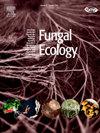Evaluation of soil fungal communities using the ITS2 sublocus and 18S gene primers under different amplification methods
IF 2.2
3区 环境科学与生态学
Q3 ECOLOGY
引用次数: 0
Abstract
Primer selection and PCR methods can potentially lead to biased descriptions of microbial communities. Here, we investigated soil total fungi and arbuscular mycorrhizal fungal (AMF) community composition and diversity from diverse sites using several primers and amplification methods. The results showed that regardless of site, the ITS3tagmix1-5/ITS4ngs primer set generated a higher proportion of high-quality reads, targeted more fungal ASVs and revealed a higher total fungal alpha diversity compared to ITS3tagmix4/ITS4ngs. Among specific primers targeting the 18S rRNA gene, AMV4.5NF/AMDGR had differential specificity for Glomeraceae, whereas SSU515Fngs/Euk742R had differential specificity for Paraglomeraceae. Regardless of site, PCR approaches (nested vs non-nested) had higher influence on the AMF community structure than primer selection, though primer selection significantly influenced arbuscular mycorrhizal fungi richness. Overall, the findings suggest that the specificity of amplification in relation to primer selection and PCR stringency should guide the best interpretation of fungal community diversity data from high-throughput sequencing of environmental samples.
利用ITS2亚位点和18S基因引物对不同扩增方法下土壤真菌群落的评价
引物选择和PCR方法可能会导致对微生物群落的有偏见的描述。利用引物和扩增方法,研究了不同地点土壤总真菌和丛枝菌根真菌(AMF)的群落组成和多样性。结果表明,无论在哪个位点,与ITS3tagmix4/ITS4ngs相比,ITS3tagmix1-5/ITS4ngs引物组产生的高质量reads比例更高,靶向的真菌asv更多,并且显示出更高的真菌α多样性。在针对18S rRNA基因的特异性引物中,AMV4.5NF/AMDGR对肾小球科具有差异特异性,而ssu515fings /Euk742R对Paraglomeraceae具有差异特异性。尽管引物选择对丛枝菌根真菌丰富度有显著影响,但无论在何种位点,PCR方法(巢式与非巢式)对AMF群落结构的影响都高于引物选择。总体而言,研究结果表明,扩增的特异性与引物选择和PCR的严格性有关,应该指导环境样品高通量测序中真菌群落多样性数据的最佳解释。
本文章由计算机程序翻译,如有差异,请以英文原文为准。
求助全文
约1分钟内获得全文
求助全文
来源期刊

Fungal Ecology
环境科学-生态学
CiteScore
5.80
自引率
3.40%
发文量
51
审稿时长
3 months
期刊介绍:
Fungal Ecology publishes investigations into all aspects of fungal ecology, including the following (not exclusive): population dynamics; adaptation; evolution; role in ecosystem functioning, nutrient cycling, decomposition, carbon allocation; ecophysiology; intra- and inter-specific mycelial interactions, fungus-plant (pathogens, mycorrhizas, lichens, endophytes), fungus-invertebrate and fungus-microbe interaction; genomics and (evolutionary) genetics; conservation and biodiversity; remote sensing; bioremediation and biodegradation; quantitative and computational aspects - modelling, indicators, complexity, informatics. The usual prerequisites for publication will be originality, clarity, and significance as relevant to a better understanding of the ecology of fungi.
 求助内容:
求助内容: 应助结果提醒方式:
应助结果提醒方式:


